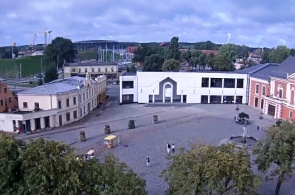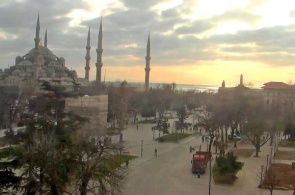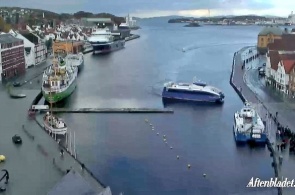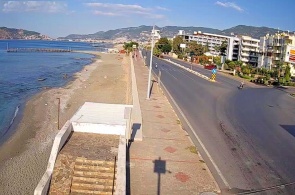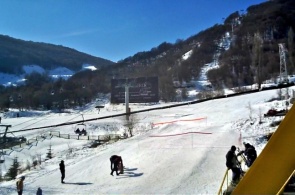AmazingKlaipeda– one of the largest ice-free ports of the Baltic, and one of the largest settlements of the country. Despite the fact that the founding of the city occurred in 1252, archaeological excavations have confirmed that on these lands lived Balts, the ancestors of the Lithuanians. Urban the chronicle begins with the construction of the knight's castle Memelburg, which subsequently changed owners several times. Features the history of Klaipeda, influenced the ethnic composition of the local population. By the way, who know Russian language here more than in the wholeLithuania. As with all old European cities, in Klaipeda a number of stunning architectural monuments. The bulk of them located in the Old town district on the left Bank of the river Dana. Here, along the narrow streets stretching an old merchant and burgher houses, covered with stone tiles. The highlight of this place give bronze sculptures. The center of the old town of Klaipeda is the Theatre square, on which stands an unusually picturesque building of the theater, which appeared here back in the XVIII century. Symbol of the city is Klaipeda castle, which, thanks to the efforts of restorers and archaeologists, has been preserved almost in its original form. Nowadays, the castle is a Museum, where extensive collections of everyday objects and weapons of the ancient Balts, ancient brewing apparatus, valuable artifacts – a ring and a silver Cup, and the layout of the fortress and a real gun. From the Windows of the Museum of the fortress offers excellent views of Klaipeda. In the summer months, the walls of the Klaipeda castle, a festival of jazz music. Another oldest building of the city is the lighthouse, the first tower, with a height of 9 m was built in the late XVIII century. Subsequently, the lighthouse was rebuilt many times, and at the moment is the current navigation object with a height of almost 50 meters, equipped with modern equipment. One of the most recognizable landmarks of Klaipeda is a Stock bridge that connects old and new part of the city. The structure was built in the first half of the nineteenth century. Then it was a wooden structure in the midst of which, for a fee of owners, opened the gate for the passage of high masts. By the end of the nineteenth century, wood was replaced by metal.
More details
The purpose of the organization “Nuaras” – to ensure that every homeless, injured or orphaned animal the best living conditions until they find a new, loving home and responsible owners, or declared the same.
Klaipéda, Lithuania
08.02.17
Camera views of the Theatre square in Klaipeda. The area is decorated with a large fountain in the center of which stands a sculpture based on the works of the famous poet and urban activist – Simon DACH. There are major cultural and social events. Nearby is the historic building of the theater, many cafes, shops and restaurants.
Klaipéda, Lithuania
19.08.16
popular camerasshow all
Sultanahmet or Blue mosque is a work of art of Turkish-Islamic architecture. Its construction began in 1609, the construction work took seven years to a 19-year-old Sultan. The name of the mosque was, due to its interesting and unique finish.
Istanbul, Turkey
Stavanger, a town in the commune of Norway, located in the South-Western part of the country, on the Peninsula, rich in minerals. Tanager combines the influence of foreign organisations such as NATO and oil companies. The camera will shoot the harbour and the promenade of the city.
Stavanger, Norway
A webcam broadcasts the district of Tosmur - quiet location in the Eastern part of Alanya, located only five kilometres from the city centre. Its rural way of life and the beauty of untouched nature attract tourists.
Alanya, Turkey
Shark Island or in English of Shark island, located in the harbour city of Sydney, the suburb of Point Piper. The locals, the natives named the island Boambilly, which translated means Shark island. After all, this name is not casual, because it's mean and looks like a shark fin.
Sydney, Australia
The webcam is installed on site Alva. Tsaghkadzor ski resort town in Armenia. Tsaghkadzor is a beautiful mountainous area among deciduous forests, with a pleasant winter climate, and clean fresh air. The highest point is 1800 meters. The truss type is a classic, divided into three.
Tsakhkadzor, Armenia


